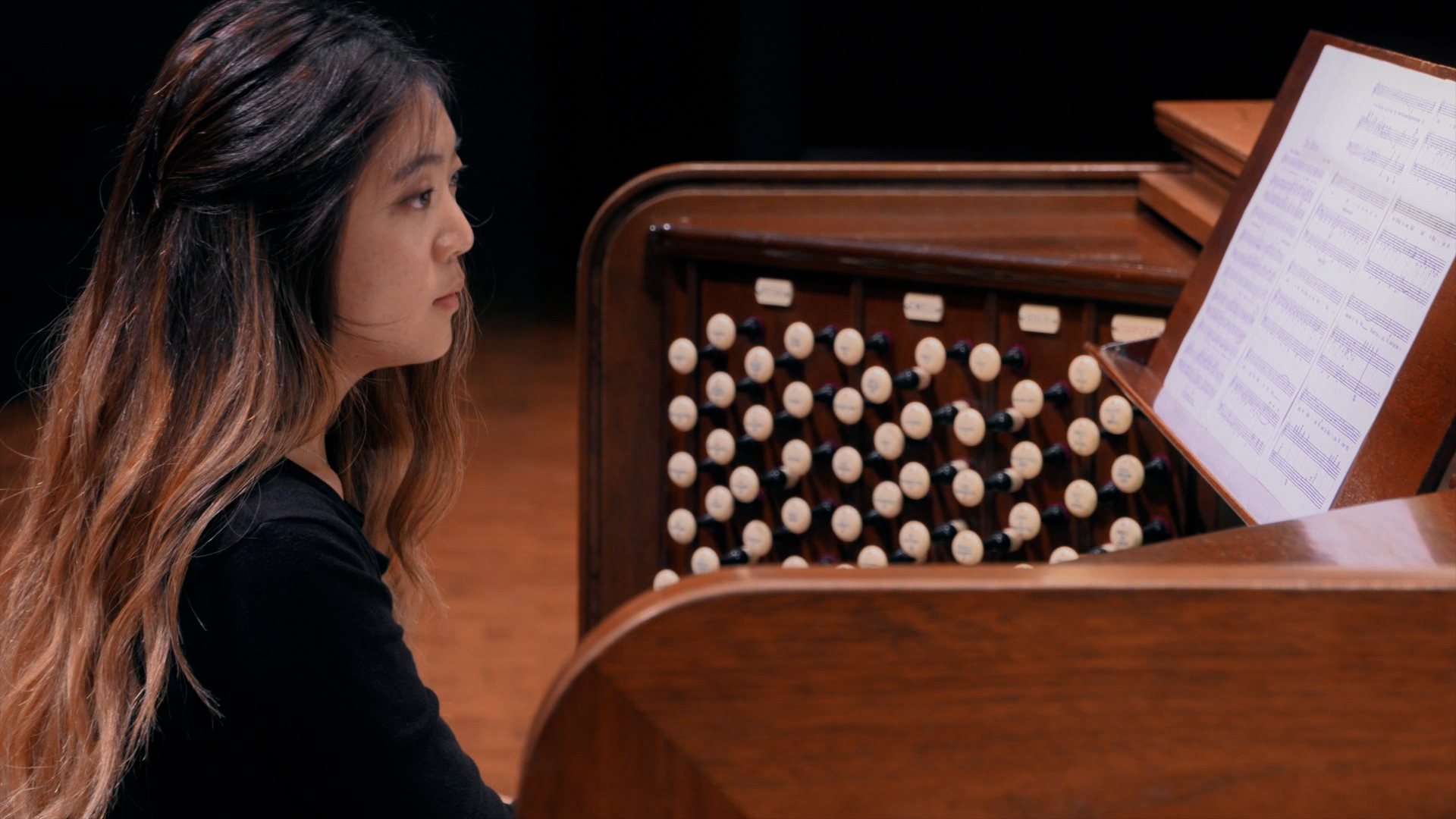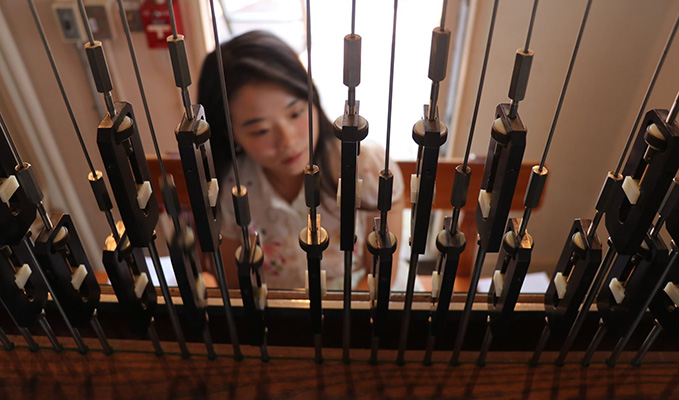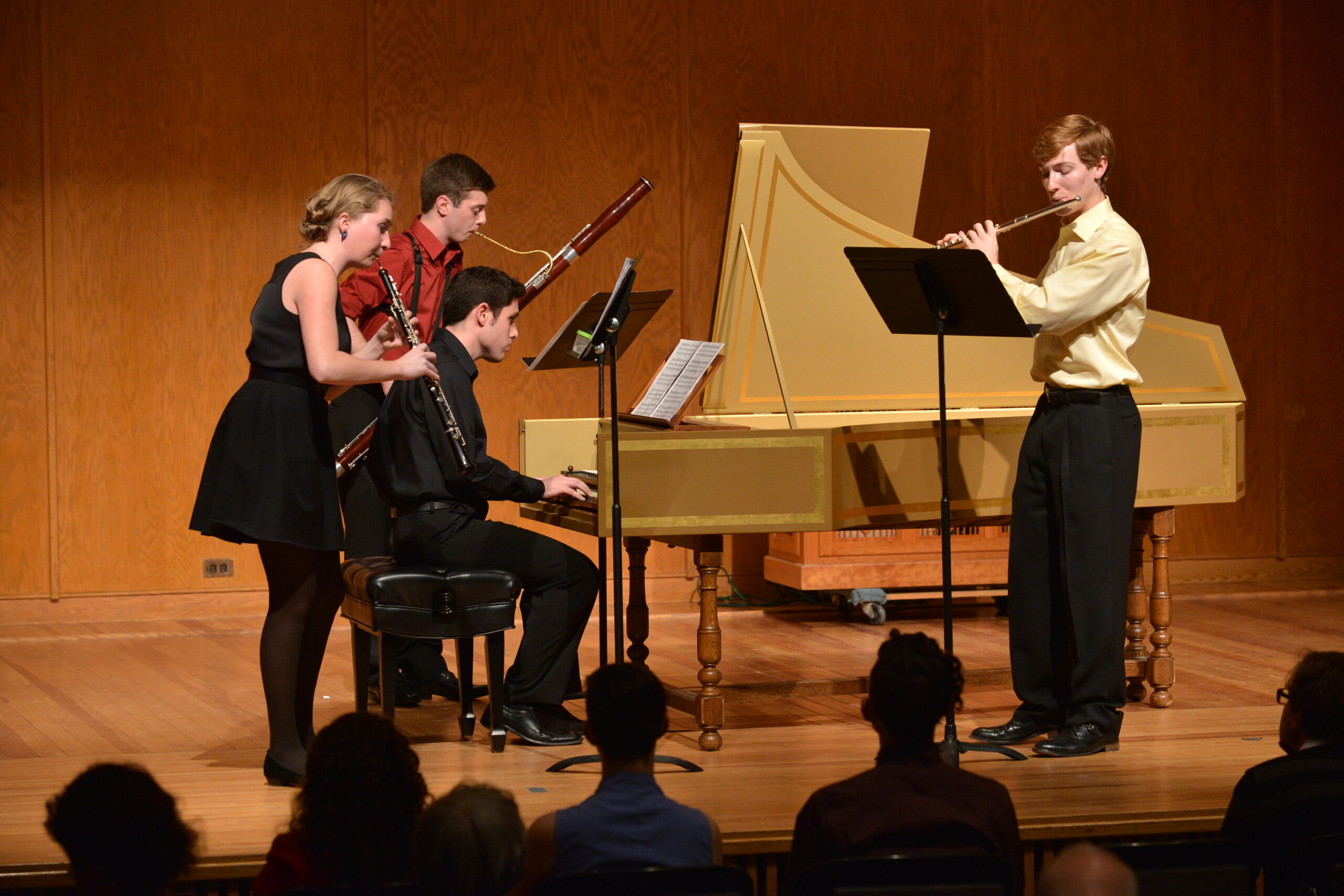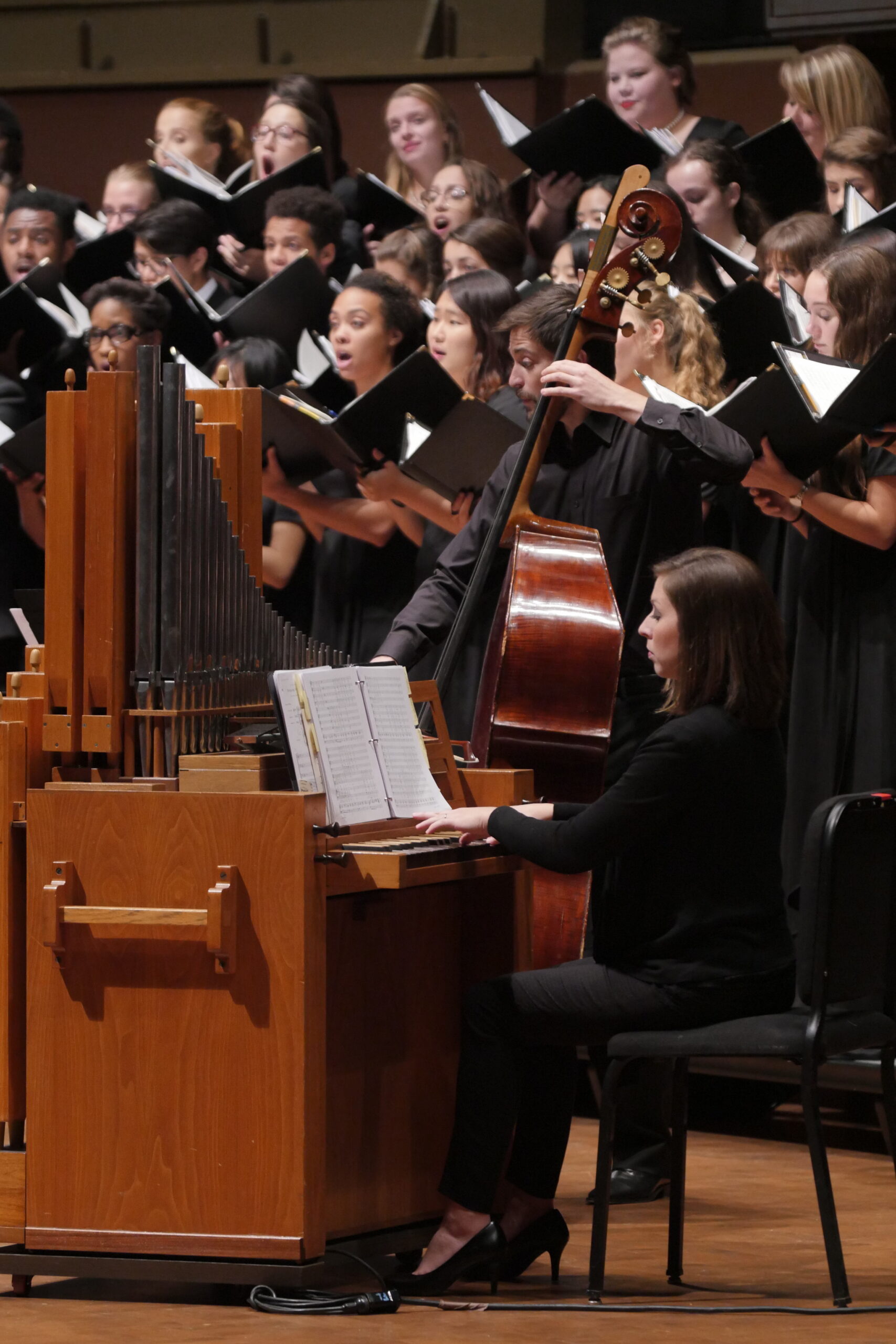Doctor of Musical Arts in Organ Performance
Designed for students seeking the highest degree in the field, the DMA is a rigorous three-year course of study culminating in three recitals and a scholarly essay in lieu of a dissertation.
Curriculum
The doctoral degree is awarded on the basis of demonstrated competence, not on the basis of a specified number of credit hours. Completion of the program normally requires six terms of full-time study beyond the master’s degree. Students are expected to attain candidacy effective at the beginning of the sixth term. Courses to include performance, private lessons, organ literature, music theory, musicology, and early music.
Final Project:
Three recitals and a scholarly essay in lieu of a dissertation.
Silent Advisor
Degree requirements and term-by-term layout for current students.
Funding
Nearly all DMA students receive full-tuition fellowships. Most also receive health benefits and a stipend attached to a Graduate Student Assistantship, which can vary in proportion to the appointment fraction and the duties associated with it. In addition to the funding packages offered by the SMTD, Rackham students are also eligible to apply for a wide range of fellowships to fund research, travel, and performance.
Residency Requirement
At least one academic year of full-time residence is required.
Faculty
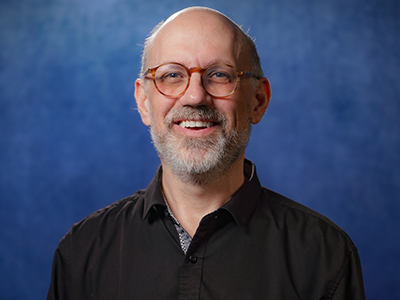
Joseph Gascho
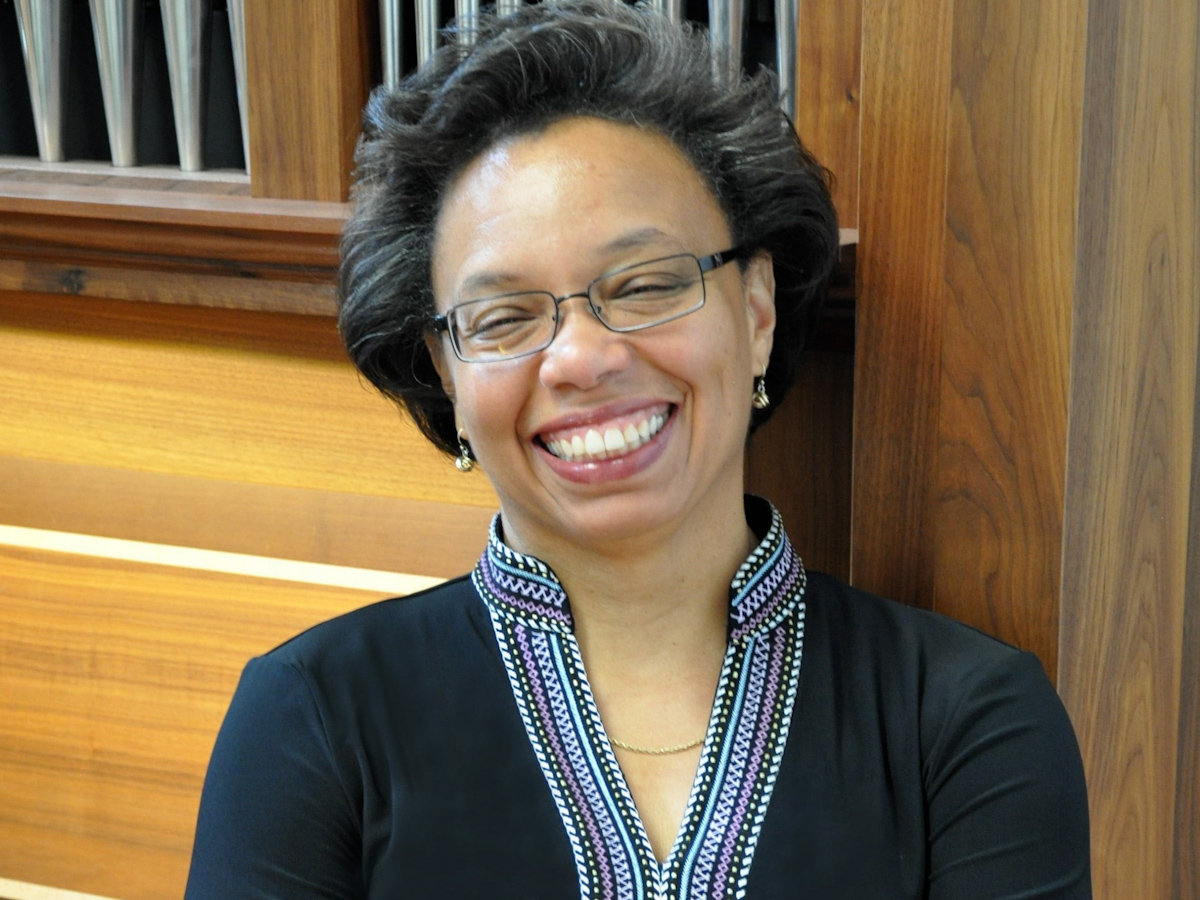
Nicole Keller
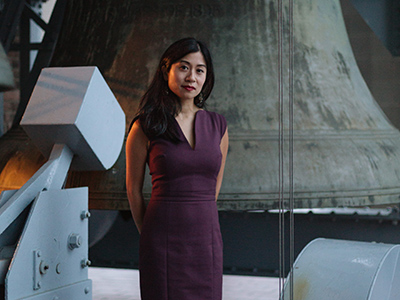
Tiffany Ng

Caroline Robinson
Instruments
All SMTD instruments are available for practice and performances.
Organs
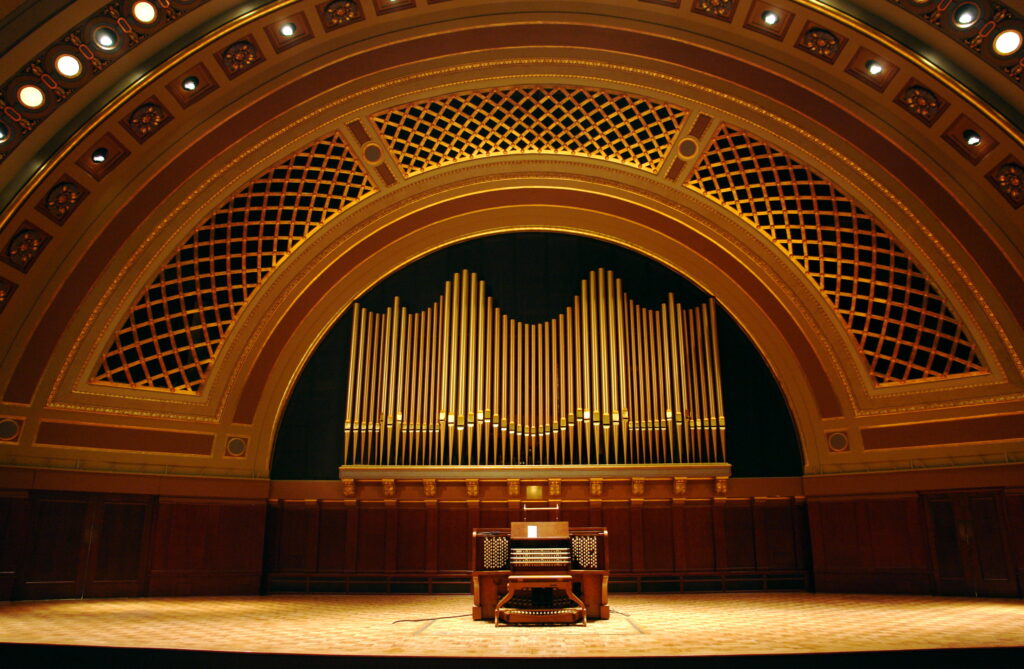
The U-M recognizes the pipe organ as the only instrument suitable for practice and performance of the organ repertoire. Students enrolled for organ instruction perform, study and rehearse on the instruments in Hill Auditorium and the Earl V. Moore Building.
- Frieze Memorial Organ (Hill Auditorium)
- Marilyn Mason Organ (Blanche Anderson Moore Hall, Earl V. Moore Building)
- James Walgreen Organ (Studio 2102, Earl V. Moore Building)
- Studio 2110 (Earl V. Moore Building)
- Practice Organs (Earl V. Moore Building)
- Italian Positiv Organ
- Portativ Organ
- Kistorgel
Additional information may be found in Pipe Organs of Ann Arbor by Professor James O. Wilkes.
Carillons
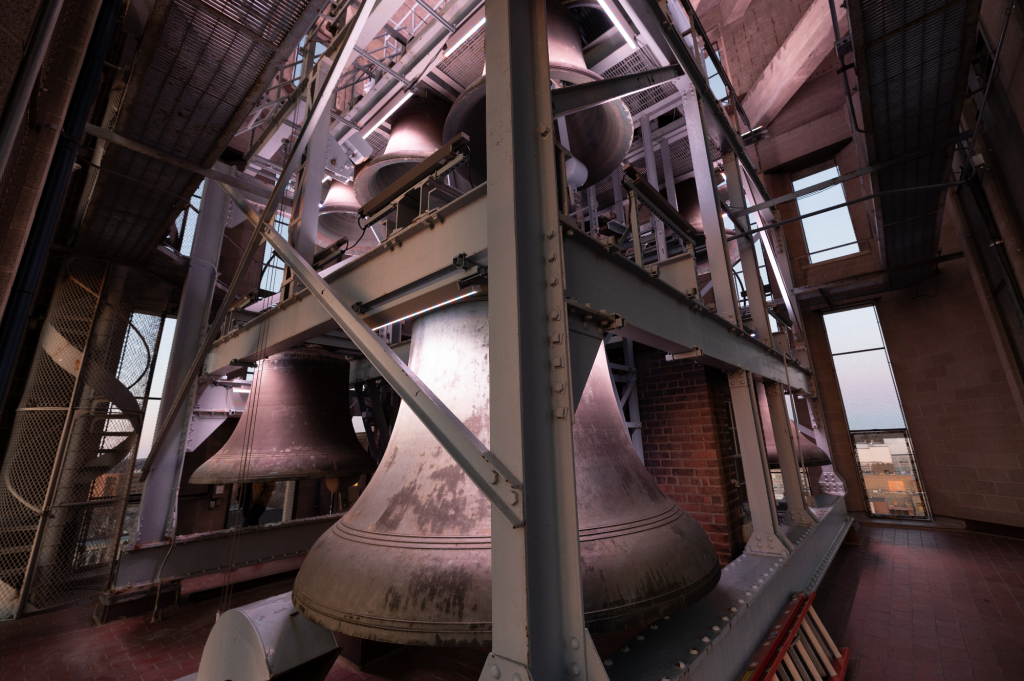
The University of Michigan has two carillons. A carillon is an instrument of at least 23 bronze bells, arranged in chromatic sequence, so tuned as to produce concordant harmony when multiple bells are sounded together. It is played from a keyboard and pedalboard, which allow expression through variation of touch. Faculty, staff, students, and alumni give regular performances on the campus carillons.
Charles Baird Carillon (Burton Memorial Tower)
53 bells cast by John Taylor & Co. in Loughborough, England and installed in 1936
Ann and Robert H. Lurie Carillon
60 bells cast by Royal Eijsbouts in Asten, the Netherlands and installed in 1996
Practice Carillons
Three practice carillon keyboards are available. Two are located in the upper floors of Burton Memorial Tower, and a digital practice carillon is located in the Duderstadt Center. Practice keyboards are not audible outside of the practice room.
For further information, contact Professor Tiffany Ng, university carillonist. Current students interested in carillon lessons: please visit the Carillon Studio page.
Harpsichords
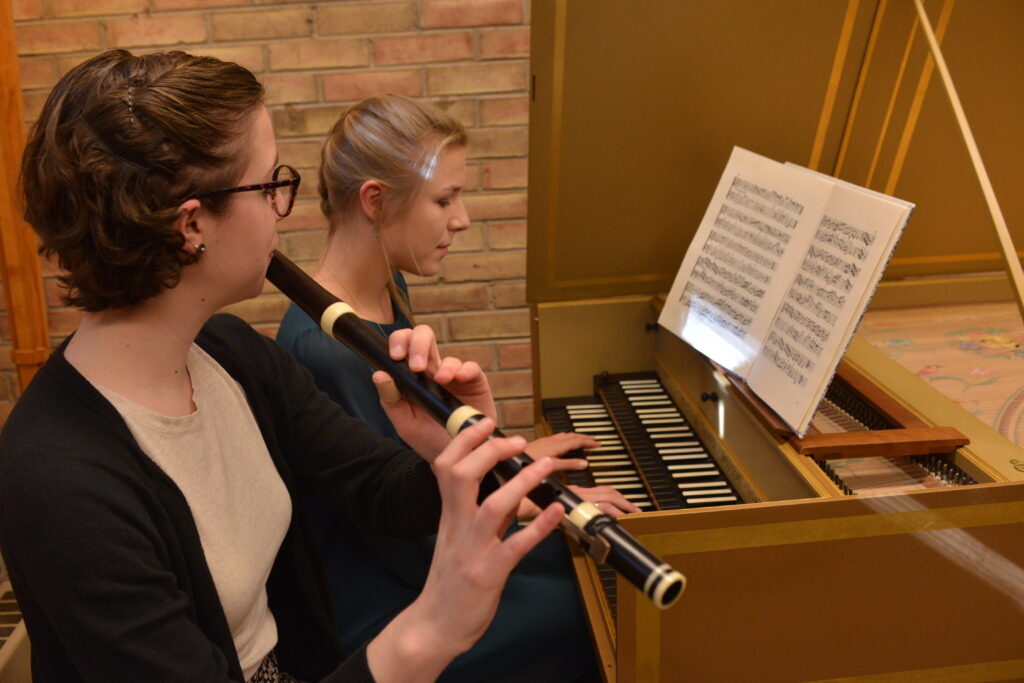
Students of the harpsichord will graduate as experienced soloists and continuo players, having learned principles of historical performance and how to tune and care for their instruments. The university maintains the following harpsichords for students’ use:
- Keith Hill, 1992: German double manual
- William Dowd, 1984: Franco-Flemish double manual after Ruckers
- Peter Fisk: French double manual
- Hubbard/Eckstein: French double manual
- Hill and Tyre, 1980: German single manual
- David Sutherland: Flemish single manual
- William Post Ross, 1965: Italian single manual after De Quoc
- Two Tuckermann kit instruments
For further information, contact Professor Joseph Gascho.
Performance Opportunities
From large ensembles in celebrated concert halls to chamber groups in intimate recital spaces, performance opportunities across all disciplines abound, with nearly 900 student performances each academic year. Whether your focus is on early, classical, or contemporary music, whether your passion is for jazz, electronic, or world music, there is an ensemble—or in many cases, multiple ensembles—to suit your interests, including specific opportunities for percussion, piano, and organ & carillon. For students in theatre & drama, musical theatre, dance, and opera, opportunities abound in both professionally produced and student-run presentations.

